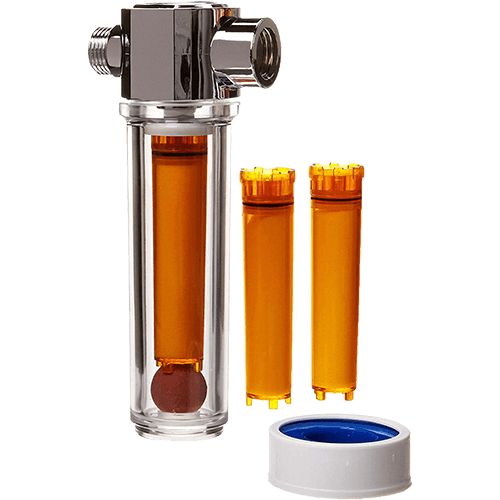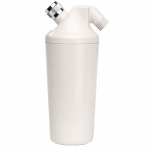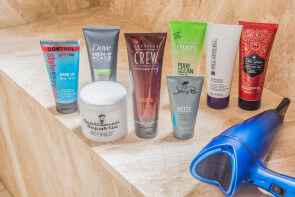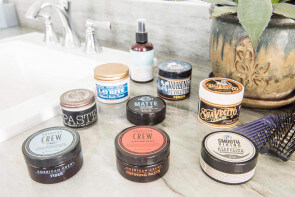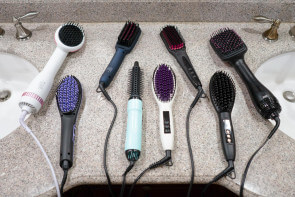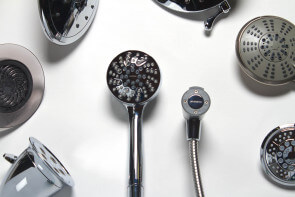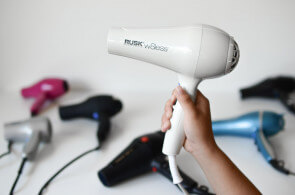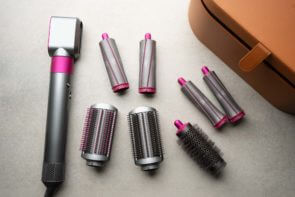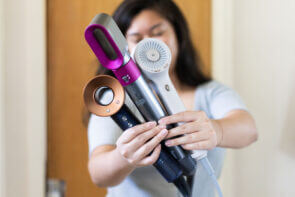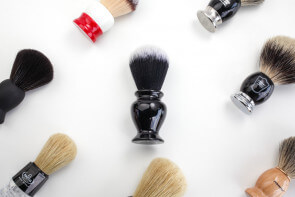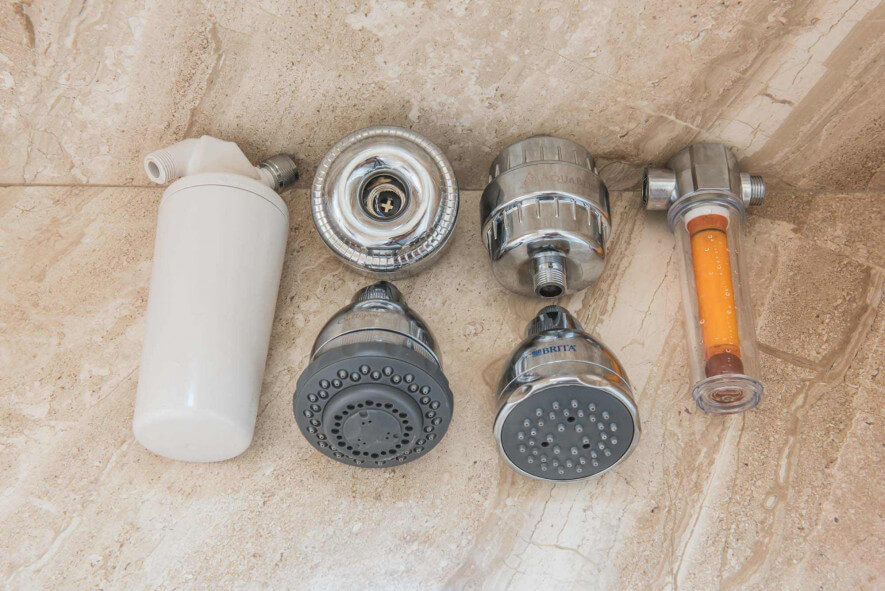
The Best Shower Filters
After comparing dozens of filters and testing the performance of six top-selling options, we found that even the best shower filters are too expensive and high-maintenence for us to recommend unless you have a specific problem with high chlorine levels. The AquaBliss – SF100 is the best filter for chlorine, with a cartridge you can flip around periodically to delay clogs. The Aquasana – AQ-4100 comes with a larger filter cartridge, but since you can’t service it, the cost of long-term ownership can be extremely high.
After comparing dozens of filters and testing the performance of six top-selling options, we found that even the best shower filters are too expensive and high-maintenence for us to recommend unless you have a specific problem with high chlorine levels. The AquaBliss – SF100 is the best filter for chlorine, with a cartridge you can flip around periodically to delay clogs. The Aquasana – AQ-4100 comes with a larger filter cartridge, but since you can’t service it, the cost of long-term ownership can be extremely high.
Table of contents
- How we selected finalists to test
- Compare the best shower filters
- What can a shower filter do?
- Important features to consider
- How we tested
- Best value: AquaBliss
- Runner-up: Aquasana
- Best vitamin C shower filter: Vitafresh
- Other finalists we tested
- The bottom line
How we selected finalists to test
We’ve researched and tested products for a water filter pitcher review, faucet water filter review, and filtered water bottle review, and in those cases the standards are well-established and most filters do a good job of improving the taste of drinking water and even removing harmful contaminants. But the demands of shower water filtering surprised us.
Even dechlorination, which is almost automatic with the slow trickle of a gravity-fed pitcher cartridge, requires specialized filters in a shower. Also, there’s so much water used in most showers, the claimed 10,000 gallons — touted by all these manufacturers, no matter the size of the filter — isn’t as long a lifespan as it may seem.
After checking for reputable reviews, we were discouraged by the information we found. Websites run by companies that sell filters were quick to laud their top sellers, but we didn’t find any in-depth analysis of what separates a good filter from the rest.
We checked the list of filters certified by NSF International, but when we found that the standard only requires 50% chlorine removal, we started to weigh usability and value concerns like maintenance options more heavily than specific certifications.
Reviews on Amazon, Reddit and YouTube didn’t give us conclusive answers about the best brands, but they highlighted a few of the pain points that seem to affect all shower-head-filter buyers: For one, performance standards used by shower-filter manufacturers are frustratingly vague, and some users expect unrealistic changes like a reduction in dissolved minerals. More than any other problem, though, even buyers who were happy with filter performance often posted follow-up reviews to note problems with minerals building up and blocking water flow.
We checked the negative reviews closely and looked for obviously deceptive reviews skewing the scores. For our finalists, we bought the highest-rated and best-selling filters from Amazon and Home Depot, trying to select the best value and most reliable seller for each type of filter we encountered. We felt little assurance that the filters would perform well, though.
Compare the best shower filters
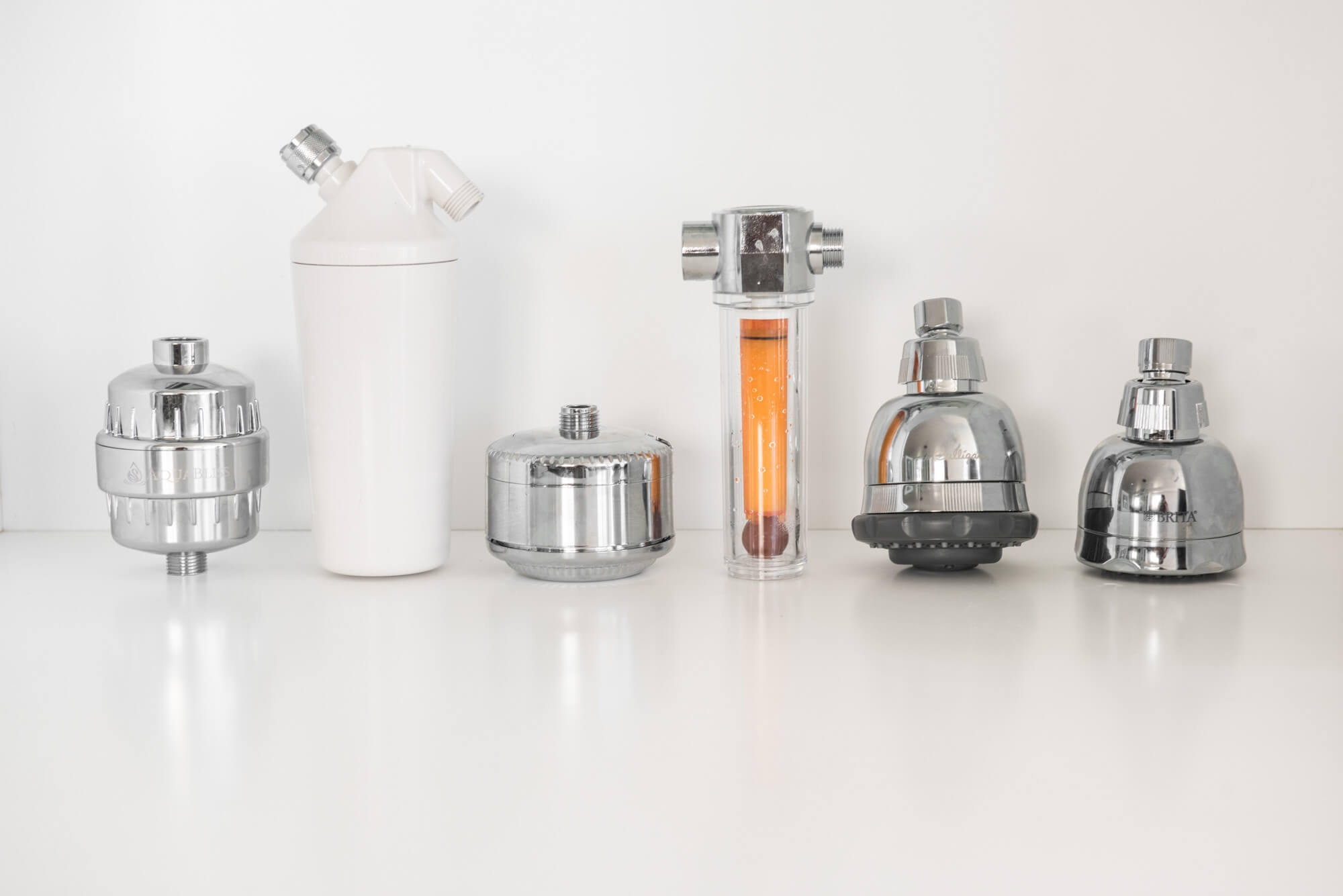
| Shower Filter | Price Scale | Chlorine Reduction | Cost Per Shower |
|---|---|---|---|
| 1. AquaBliss - SF100 | $$ | 100% | $0.03 |
| 2. Aquasana - AQ-4100NSH | $$$$ | 100% | $0.09 |
| 3. Sprite - SL2-CM | $ | 86% | $0.02 |
| 4. UBS - Vitafresh | $$$$ | 71% | $0.16 |
| 6. Culligan - WSH-C125 | $ | 29% | $0.02 |
| 5. Brita - SHS102 | $$ | 29% | $0.03 |
What can a shower filter do?
First, the bad news. If you’re concerned about exposure to chemicals that are getting into your water supply, the kinds of filtration that work well for drinking water even in a bottle-sized filter aren’t very effective in a shower. Those filters need a lot of surface area to grab contaminants, so you’d need an 9-inch-diameter filter to supply a shower. They’re also far less effective with hot water, so if organic chemicals like pesticides are your primary concern, you’ll have to filter your water before it gets to your hot water tank.
Chlorine removal
Water from a municipal supply is usually treated with chlorine or chloramines. Federal rules aim to keep levels around 2 parts per million, but that’s still enough that most of us can easily recognise the taste of chlorine in tap water. Swimming pool water is typically kept at 3 ppm.
Our local water quality report shows a range of 0.0 to 2.7 ppm, so in the worst-case scenario our tap water has almost as much chlorine as the local pool, but it usually hovers just below 1 ppm. In tests for our water filter pitcher review and faucet-mount water filter review, our testers greatly preferred the taste of filtered water to tap water, but it’s not making us any more or less sick.
Studies have shown that chlorine is easily absorbed by the skin, but experts note that chlorine is eliminated from your body quickly. Vitamin C has become a trendy way to neutralize the chlorine in bath water, but many experts deride it as a waste of money. Neal Langermann of the American Chemical Society told ABC that “to make the argument that chlorine is dangerous as it exists in water is totally specious… There is also absolutely no evidence that chlorine in water form is bad for your skin.”
Other experts note that if you do feel irritation after swimming or other contact with chlorinated water, a moisturizer is your best bet.
If you’re especially sensitive to chlorine vapors in your eyes and nose, note that hot shower water releases chlorine more quickly, so you may notice more irritation from a shower than you would from cold pool water.
It’s important to remember that different people have different tolerances for chlorine. If you find that your skin is dry, some skin care specialists point to chlorine as a possible culprit. If this is really your problem we hope that a shower filter will give you relief, but manage your expectations.
No help for hard water
Hard water has a lot of dissolved minerals, specifically calcium or magnesium ions. For bathing, this causes two problems: First, the minerals will build up in all your fixtures and ruin that beautiful shower head you just installed. Second, the mineral ions in your water will bind with soap molecules, so instead of making helpful grease-grabbing suds you get slimy soap scum.
Household water-softener systems usually replace the hard water mineral ions with sodium ions in a barrel-size bed of “ion exchange resin.” With current water softening technology, there’s no effective way to soften water in a filter-size device that can supply the two gallons per minute most of us demand for a shower. Even the pitcher-sized ZeroWater system is fairly slow and expensive for drinking water, and any device that used a similar technology for a shower filter would be depleted quickly.
Other water softener alternatives
If you’re mostly interested in reducing scale spots or other minor hard-water problems, some people have good experiences with magnetic or electronic water descalers like this one. These devices don’t filter out mineral ions, they just magnetize them so they stay together in the water and don’t bond to surfaces as easily. It’s not an actual solution to hard-water problems, but many users report that scale is easier to remove after this treatment.
Important features to consider
In-line filters vs. filtering shower heads
If you already have a shower head like one of the top picks from our shower head review, look for an in-line filter that will allow you to keep using it. But if you’ve got a shower head that’s wearing out or doesn’t have the spray patterns you’d like, you can get nearly all the filters we tested with a pretty good attached showerhead for around $10 more.
NSF 177 certification
A few of the best filters we tested have been tested by independent labs to reduce the chlorine content of regular household water. NSF doesn’t tell you how well a filter performs, they just keep a list of filters that pass. When we looked for information about the test, we found out that a filter only has to cut chlorine levels by 50% to make the grade.
Activated carbon filtration
Charred organic matter like coconut-hull pellets can be “activated” at high temperatures, making the charcoal incredibly adsorbent. This is the most popular way to filter drinking water, since it captures nearly all free-floating organic molecules like pesticides, solvents and even dissolved gases like formaldehyde. Carbon doesn’t capture dissolved minerals, so it won’t help with hard water.
Activated carbon isn’t as effective in hot water, though. For one thing, the high temperature can open up the pores of the filter so it doesn’t capture particles as effectively. Most contaminants are also more thoroughly dissolved in hot water, so they’re harder for any filter to grab. None of the shower filters we researched uses a carbon filter without some other means of dechlorination.
KDF dechlorination
Kinetic Degradation Fluxation (“KDF”) is a trade name for a specialized dechlorination process, usually sold as KDF 55 by the original patent holder, KDF Fluid Treatment Inc. This stuff is basically just grains of copper and zinc, which change the chlorine ions we don’t want in our shower into non-active chloride. KDF works at much higher flow rates than carbon filtration, enough to filter your main household water line with a big filter.
In bigger systems the barrel-size tanks of KDF 55 are designed to be “backwashed” with high-pressure water as often as three times per week to clear out mineral build-up. Chlorine shower filters are tiny by comparison and are often made to be thrown away as soon as they plug up.
Vitamin C dechlorination
Vitamin C (ascorbic acid) is a safe and effective additive that will neutralize both chlorine and the less-prevalent chloramine. This reaction doesn’t create hazardous byproducts, so it’s used for kidney dialysis, recommended by agencies like the Forestry Service for neutralizing heavily chlorinated water before draining it into rivers or lakes and popular among brewers who need to remove chlorine from large amounts of water quickly.
Vitamin C shower water infusion has become a popular upgrade in high-end spa facilities, but the trend has critics who insist that it’s not worth the hassle just to remove a tiny amount of chlorine.
Other dechlorination methods
Many chlorine shower filters include extra “stages” of dechlorination, including chemicals like calcium sulphate or sodium metabisulfite. Industrial users have specific needs for PH levels and sodium levels in their water, but as far as we’re concerned all of these chemicals work about as well. Vitamin C will be better for the few people with rare sulfite sensitivity reactions.
Backwash maintenance options
The most common complaint about shower filters is that they get plugged up with sediment and minerals. A few systems use filter cartridges that can be flipped around periodically for backwashing — using water pressure to blast build-up out from between the granules of filter media. This is mostly effective for KDF media, but any filter can get plugged.
For well water or other hard water, this is going to be an essential step to keeping a copper-zinc dechlorination system from getting plugged. The inventors of this process recommend backwashing at least three times per week with a giant whole-house system that dechlorinates a hundred gallons per day; the shower filter manufacturers just recommend flipping your filter if you see any reduction in water pressure.
How we tested
We installed each of these shower filters in our tester’s main bathroom to see how they compared in real-world conditions. We installed each filter —either directly if it was built in to a showerhead, or in line with a 2.5-gallon-per-minute hand shower — and ranked them based on the following tests:
Chlorine test
We checked hot water flow before and after filtering with a low-range chlorine test kit from Hach, the same kind of test used to check civic water treatment systems.
We were expecting good results with our shower filters, since drinking water filters have all been extremely effective at removing chlorine, and the shower filters are specifically designed to remove it. We were surprised to see that some filters didn’t even make the minimum-standard 50% reduction in our tester’s mildly chlorinated water.
The bigger Aquasana filter with its giant pile of KDF media was top of the heap, pulling all detectable chlorine out of the water. The compact AquaBliss filter was neck-and-neck, though, using a smaller amount of copper and zinc but adding vitamin C and calcium sulfite to more than make up for it. The middleweight slim filter from Sprite appears to have a similar blend of media, but wasn’t as effective.
Vitamin C alone was a good performer in this test, but there was still a small quantity of chlorine that the Vitafresh probably didn’t have time to neutralize. Note that the shower we used has a five-foot hose on the hand-shower attachment, so we were allowing a best-case scenario by giving the mixed-in dechlorinators time to take effect.
Flow test
We checked each filter for flow rate with a water conserving 2.5-gallon-per-minute showerhead, and none of the filters reduced the flow enough to make a difference. As we found in our past reviews, flow rate isn’t as important for the best shower heads as water pressure is.
If any of these filters gets plugged up, that’s when the flow will change. A water filter like the AquaBliss, Brita or Culligan can be backwashed every week or so to keep build-up at bay.
Water-hardness reduction
We checked the water coming out of the filters to see if there was any change in hardness, as measured with a conductivity meter to detect free mineral ions like calcium and magnesium.
The differences in water hardness after filtering were below the detection threshold using this method. The media used in these filters might capture some iron, but such small devices are never going to compete with a full-size water softener or manganese greensand iron filter as a long-term solution.
Long-term cost
| Shower Filter | Price of Refill | Cost Per Shower* | Filter Weight (ounces) | Price Per Oz. | Backwash Option? |
|---|---|---|---|---|---|
| AquaBliss | $15.00 | $0.03 | 8.0 | $1.87 | Yes |
| Aquasana | $52.50 | $0.09 | 32.1 | $1.63 | No |
| Sprite | $10.00 | $0.02 | 9.0 | $1.11 | No |
| Vitafresh | $5.78 | $0.16** | 1.3** | $4.34 | No |
| Brita | $9.97 | $0.02 | 5.6 | $1.78 | Yes |
| Culligan | $15.00 | $0.03 | 6.3 | $2.38 | Yes |
| * Refill purchase cost with 2.5 GPM shower for 7 minutes, assuming 10,000 gallon filter life | |||||
| **Vitamin c refill only, with cost as tested | |||||
If you want to keep these filters working well in a normal household, you’ll need to replace them when they get plugged or when the active chemicals are depleted. All of the manufacturers recommend a 10,000 gallon or six-month filter replacement, but that figure includes a lot of assumptions.
If you have soft water and you shower quickly, you could get away with longer periods between changing the cartridges. The filter will still probably plug up with minerals before the dechlorination media inside loses effectiveness.
We first calculated the cost of the filter per daily shower based on the manufacturer’s recommendations, with replacement after treating 10,000 gallons and assuming a 7-minute shower with a water-conserving showerhead. That U.S.-average shower use adds up to about 500 gallons per person over a month, so adjust your expectations based on how you actually use your shower.
When you look instead at the cost of the filter based on the weight of the cartridge — the bulk of which is metal shavings for KDF 55-type dechlorination — the price looks more fairly distributed. If you assume that the giant 32-ounce filter cartridge in the Aquasana will actually last longer three or four times longer than the 8 ounces of media in the AquaBliss or Sprite, it’s a similar value.
Accurate vitamin C cost testing
Since the actual amount of vitamin C dispensed by the UBS – Vitafresh chlorine shower filter is what will determine the cost, we decided to see how accurate the manufacturer’s rating for service life actually is.
The three vitamin C refill cartridges we got were all within 0.007 ounces of a 1.3-ounce average, so consistency of the refills is good.
When we tested the system for how much powder was mixed into shower water, though, we found it is not as economical as claimed. We checked the weight before and after running 10 gallons of hot water through the system, and the cartridge lost 0.002204 ounces of powder — that works out to an average life of about 600 gallons per cartridge, not 10,000.
If you have a shower head that uses 2.5 gallons per minute, you’d only be able to take 34 average-length showers before the powder is used up. Newer Watersense-certified showerheads will give you 20% more time between refills and cut down on your water bill. Either way, it’s far more expensive than the other filter types.
Best value: AquaBliss
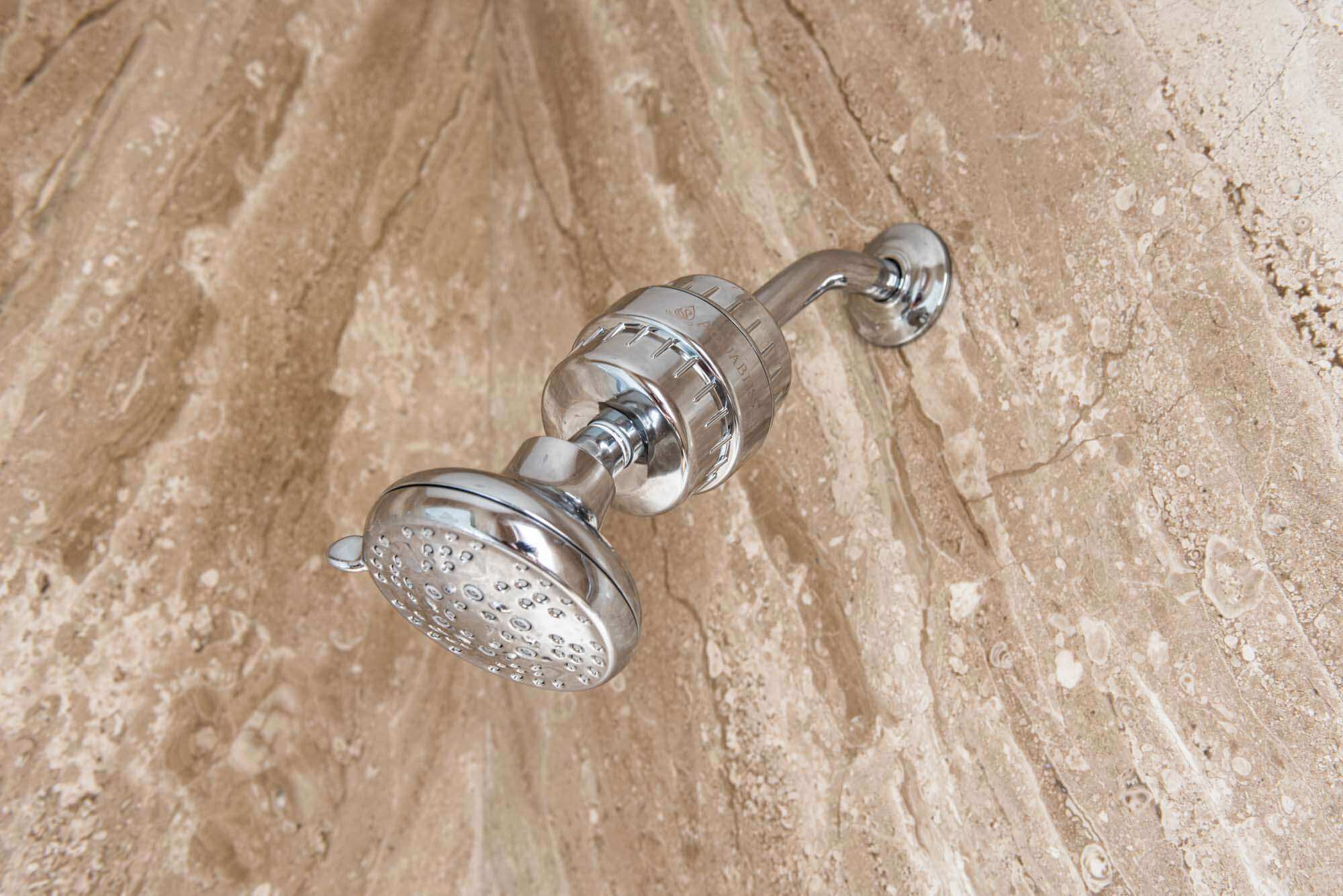
The best shower water filter is the AquaBliss – SF100, a compact in-line filter and dechlorination system that actually removes all detectable chlorine from your water. It’s not the least-expensive system we found, but for less than $35 it is still half the price of other designs that match its effectiveness.
Filters from the big water treatment companies, Culligan and Brita, removed less than 30% of the chlorine in our shower water. AquaBliss took out all of it — we ran the test three times to make sure that wasn’t an error.
AquaBliss sells two different versions of this design, the “ten stage” SF220 and the “fifteen-stage” SF100. They use the same copper-zinc granules and calcium sulfite to do the big job of neutralizing chlorine. The SF100 version adds vitamin C but also an ineffectual amount of activated carbon and some probably-non-functional minerals like magnetite and tourmaline.
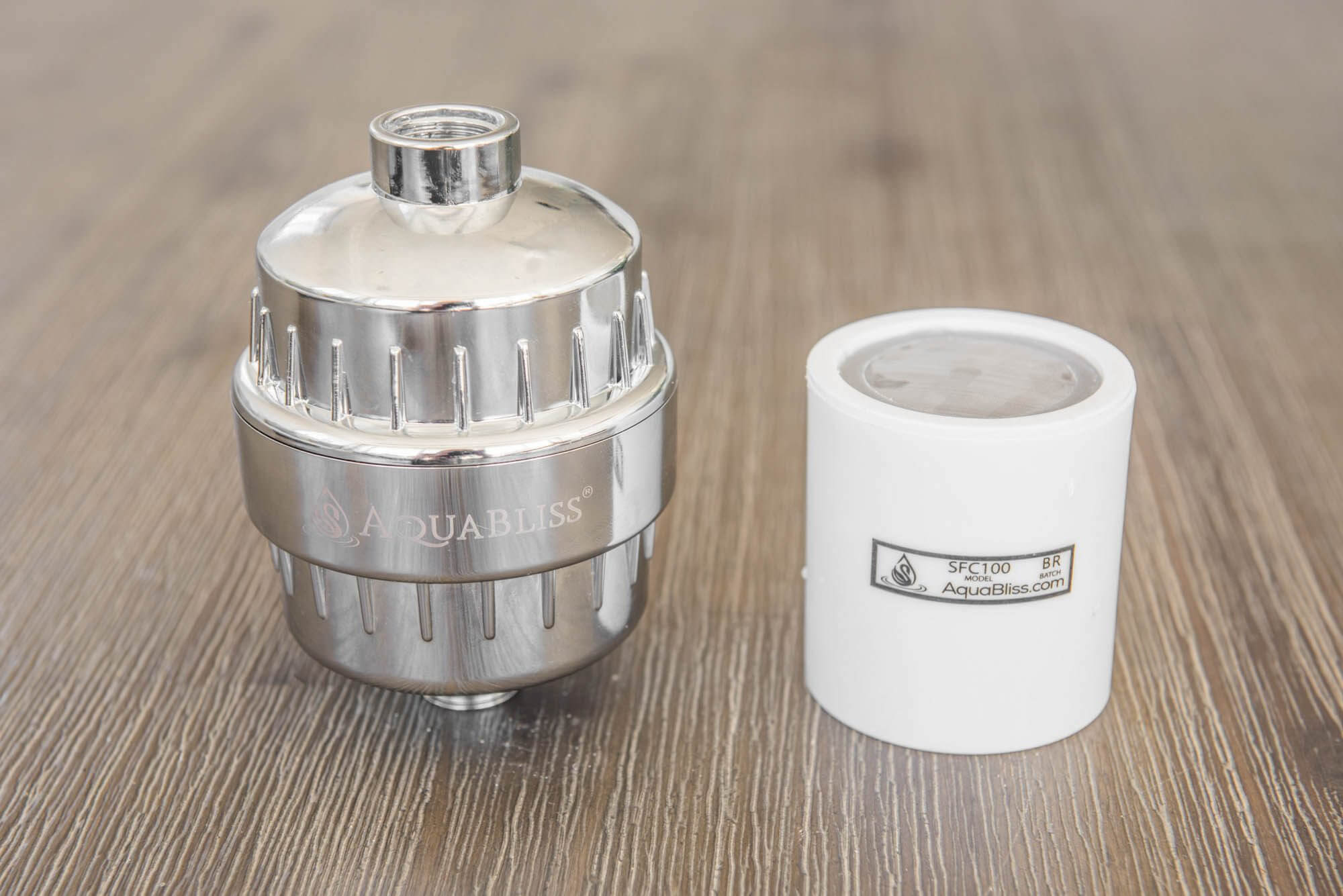
We tested the version with extra stuff in it to see if the dechlorination system was compromised, and it works well, so you should get similar results from either refill. At the time we’re publishing this review, the price is the same. It’s hard to say if one refill type has a longer useful life, because clogging from hard water minerals will usually happen before you exhaust the chemical action of the media.
AquaBliss claims to have more active zinc-copper media in their filters than other shower-head filters on Amazon, though the housing looks nearly identical. The other filters we found were sometimes more expensive, sometimes less so, but AquaBliss is by far the best-seller.
At the end of the day, even the best shower filter has limited effectiveness. The AquaBliss won’t solve problems with hard-water spots or rust stains if you need a shower filter for well water. It also won’t be very effective in places where cities treat with chloramine instead of chlorine, and it may plug up before the six months of claimed effectiveness run out. If you understand those limitations and still want a shower filter for chlorine, this is the best value.
Key takeaways:
- The AquaBliss is one of the few designs we tested that actually removes all free chlorine.
- At an estimated cost of 3 cents per shower, this is a better value than most good filters, but it’s still expensive.
- This filter can flip around to backwash if it gets plugged.
- Copper-zinc filters like this are not effective if you have chloramine in your water instead of chlorine.
Runner-up: Aquasana
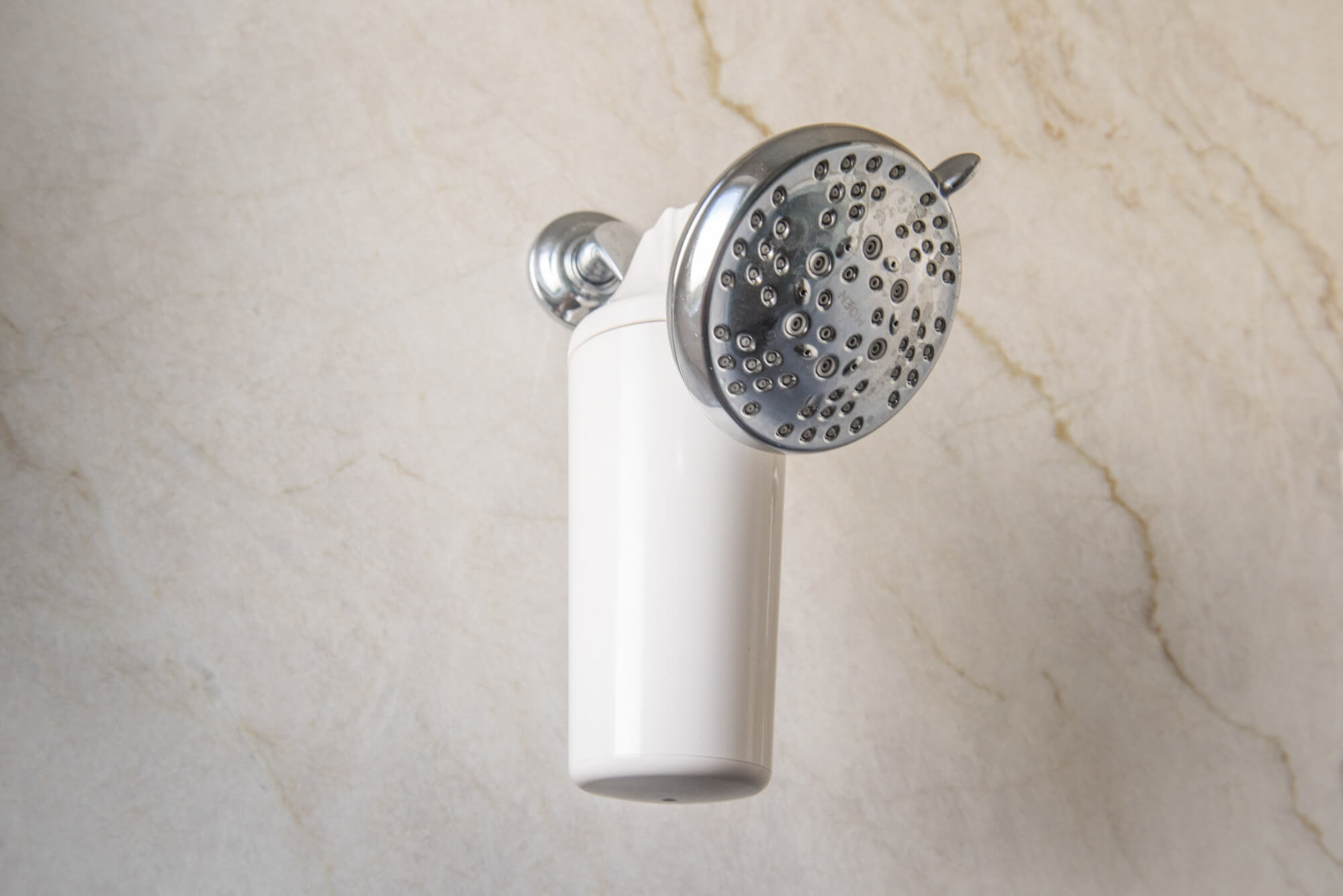
If you’ve got soft water but you want an extra chlorine-removal step in your shower, the Aquasana – AQ-4100NSH offers the biggest filter with a full stage of granular activated carbon to clean up other contaminants. The price, though, is high both for the initial purchase and for the cost to buy refills. If it plugs up in a few weeks with minerals from hard water, using this filter is like washing money down the drain.
In our tests, the Aquasana was one of only two filters that actually removed all detectable chlorine. Compared to the AquaBliss, the filter cartridge holds at least double the amount of active copper-zinc media along with a carbon filter. A bigger filter is usually a great feature, since it allows complete treatment at faster flow rates and keeps working for a longer time.
The downside to the Aquasana filter is that you can’t backwash it. Unless you have a good water softener system, the filter will almost certainly plug up with minerals before the metal granules lose their ability to neutralize chlorine. Some customers report the filter working less than a month before water pressure starts to slow.
One other problem with the Aquasana is that the carbon filter will let out black silt when you use it for the first time. The installation instructions are very clear about this and advise catching the dirty water in a bucket and dumping it on your plants. It won’t stain your shower if you forget to read the instructions, but it’s an extra step either way.
If you live in one of the rare areas where your water is low in dissolved minerals, but it’s also chlorinated, this filter would be ideal. Otherwise, the AquaBliss makes far more sense.
Key takeaways:
- The Aquasana filter is expensive but very effective at removing chlorine.
- This filter has the most dechlorinating media in it and should last longer than the rest for some users.
- The charcoal filter stage will remove some organic contaminants, but in hot water it’s not very effective.
- These expensive filters can plug up in a month with hard water minerals.
Best vitamin C shower filter: Vitafresh
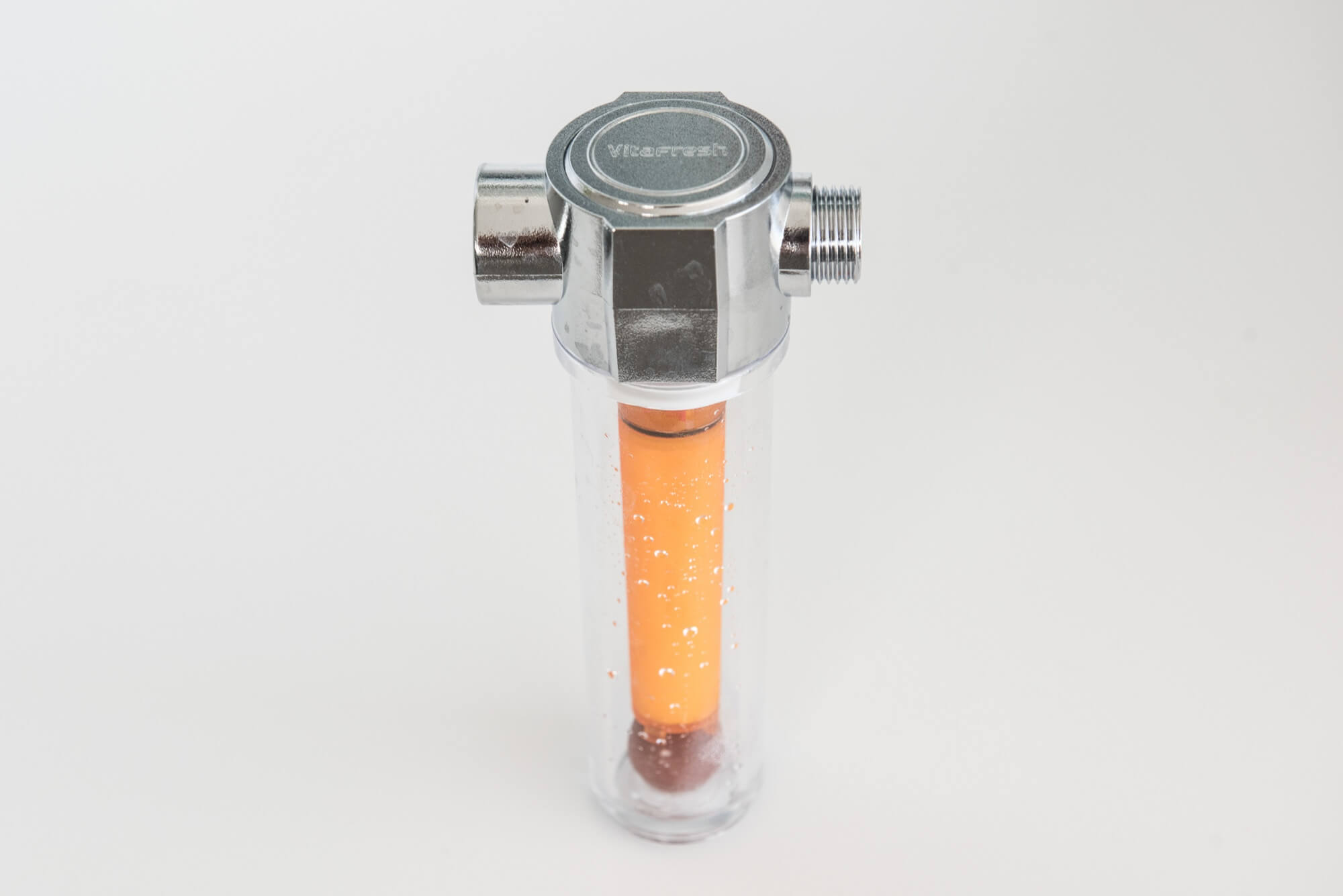
If you’re looking for a simple, effective way to eliminate chlorine from your shower water, the vitamin-C-based UBS – Vitafresh system is worth considering. In our tests the vitamin-C treatment removed 71% of chlorine, and it’s the easiest system to monitor.
The refill cartridges we got were consistent, and based on the hundreds of customer reviews we read, Vitafresh is the most trustworthy provider of the least expensive vitamin-C shower filters. If you’re going to be using this every day, though, you may want to try your hand at opening and refilling the cartridges with ascorbic acid powder yourself; it’s about $10 per pound when you buy in bulk, one eighth of the price of pre-packaged cartridges.
Vitafresh came up with a bold design, using a see-through acrylic chamber to show you the translucent orange cartridge — you can even watch the little wheel at the top spin up as you turn on your shower water and it starts mixing in precise amounts of the powder. Compared to the white or chrome-color housings of the other filters that will just blend in, this design assumes you want to show off your unique purchase.
The vitamin-C treatment wasn’t the most effective we tested. Other models were able to remove chlorine entirely, while the Vitafresh only reduced it by 71%. The Vitafresh is the only filter we can say for certain is sulfite-free, though, since most of the other filters seem to use calcium or sodium sulfites to help out their copper-zinc media.
Vitamin-Powered Alternative: UBS - Vitafresh
If you want to avoid sulfites or you hate the idea of a ball of an unseen metal plugging up with minerals, this system makes it easy to monitor when you need to replace the powder cartridge. It's not as effective, though, and dumping vitamin C in your water isn't cheap.
The biggest benefit of the Vitafresh design is that you can see exactly how much vitamin C powder is left in the cartridge, so you don’t have to guess when to replace it. In comparison, the electrochemical action in our top pick filter would require periodic chlorine testing to be sure you’re still getting the full benefit of the system.
We don’t consider 16 cents per shower to be a good value, but if you’re sensitive to the chlorine in your water and you don’t like the idea of using a filter that gets plugged up while it’s still perfectly capable of removing chlorine, this could be a good system.
Key takeaways:
- The Vitafresh shower filter reduces chlorine and chloramine by adding vitamin C to your water.
- This isn’t as effective as some other filters, but it’s better than average.
- You can easily see how much vitamin C powder is left in these cartridges.
- Costs for official refills are quite high, but if you refill the vitamin C yourself, it’s the most economical dechlorination system.
Other finalists we tested
Sprite
![]()
Local retailers led us to the Sprite – SL2-CM, a shower filter with a unique design that allows it to filter water without adding as much length to your shower head. If you’re tall enough that you already resent how low your shower head is, this would be one option to add a filter without dropping your shower head much lower.
The downsides, though, add up quickly. Whether it’s because of the specific balance of chlorine-grabbing media or because of the path water takes, these cartridges don’t filter as effectively as the AquaBliss, leaving 0.1 parts per million of chlorine instead of neutralizing all of it.
Another downside is that the space-saving design of the Sprite filter prevents you from backwashing it. You could buy a threaded coupler and install the whole filter backwards, but most people aren’t going to go through that effort to extend the life of a $10 filter.
Culligan

For a built-in showerhead filter, the Culligan WSH-C125 is inexpensive, but it wasn’t very effective in our tests. It’s a fairly nice showerhead, with fittings made from actual chrome-plated metal, but not nice enough to replace any of the picks in our other shower head review.
Our water had 0.7 parts per million of chlorine without a filter, and the Culligan only managed to get that down to 0.5. A pretty pitiful showing, to say the least.
The paperwork included with this model doesn’t give the actual test results from the lab that certifies compliance with NSF Standard 177, but Brita’s does, and we don’t blame Culligan for keeping the numbers private. Under the right conditions — for example, with a higher level of chlorine in the water — it wouldn’t be surprising if this shower can hit 50% instead of 30%. That’s still not something to boast about.
If you really need the shortest possible filtered showerhead, this model could make more sense than trying to use an in-line filter, but the poor performance pretty much negates that advantage.
Brita
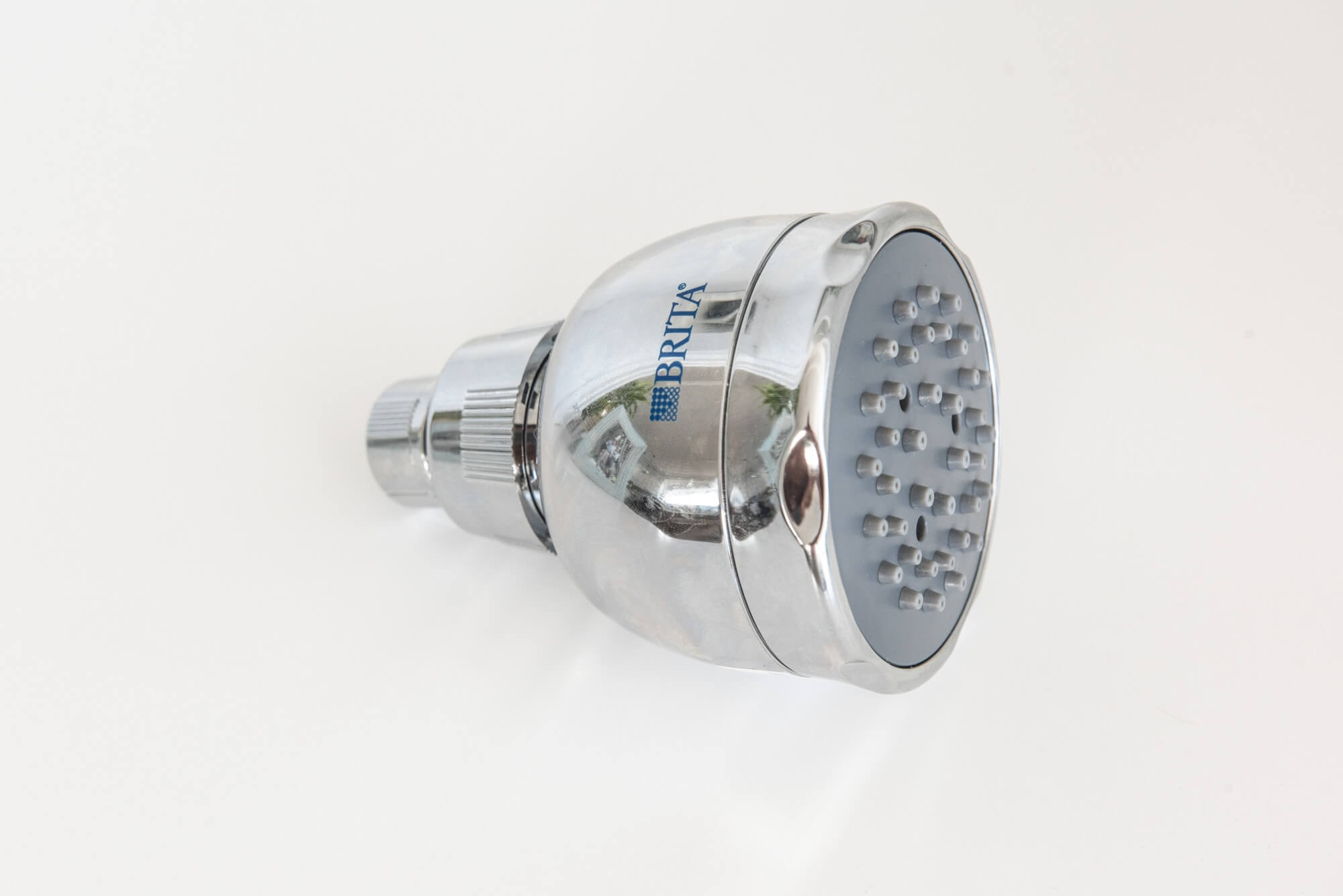
The Brita – WFSHS102 is very similar to the Culligan filtered showerhead. They aren’t identical, since the Culligan head uses more metal parts and has a few more spray-pattern options. The connection collar is marked with the same Paragon patent information and flow rate on each, so it wouldn’t be surprising if they come out of the same factory.
Again, performance was poor for chlorine removal, less than 30% of the already low level of chlorine in our water. We checked each filter at least twice to make sure we weren’t getting biased results; in its manual Brita claims 57.8% reduction with a starting level of 2 ppm instead of the 0.7 ppm in our real-world test. Even if your water matches that scenario exactly, 60% isn’t the reduction you want.
Compared to other systems, the Brita at least has relatively inexpensive refills at an average price of $10 — you can also pick them up at Home Depot. The Brita cartridge we tested has 0.7 ounces less media inside than the equivalent from Culligan, but they are otherwise identical except for the logo stamped into the plastic.
The bottom line
If you’re desperate for relief from itching and dryness, and you know that your water has a lot of chlorine in it, a filter that neutralizes the chlorine might help.
The AquaBliss – SF100 shower filter removed all detectable chlorine in our real-world test, so for about $45 per year for filters the price of relief is pretty reasonable. But if you’re not certain chlorine is your problem, this filter won’t do anything for you other than get plugged up every few months.
More Reviews
Johnny B - Mode
American Crew - Defining Paste
Xtava - Twist Conical Curling Wand
The 8 Best Hair Straightening Brushes
MiroPure - 2-in-1
GVP - Ceramic Titanium
Moen - Magnetix Attract
Rusk - W8less
Dyson Airwrap Complete Review: Is It Worth The Cost?
Dyson - Airwrap Complete
The Best Body Hair Trimmers for Men
Philips Norelco - Bodygroom
Shark HyperAir IQ Hair Dryer Review
Shark - HyperAIR
Fendrihan - B&W Synthetic
JuJuBe - B.F.F.




